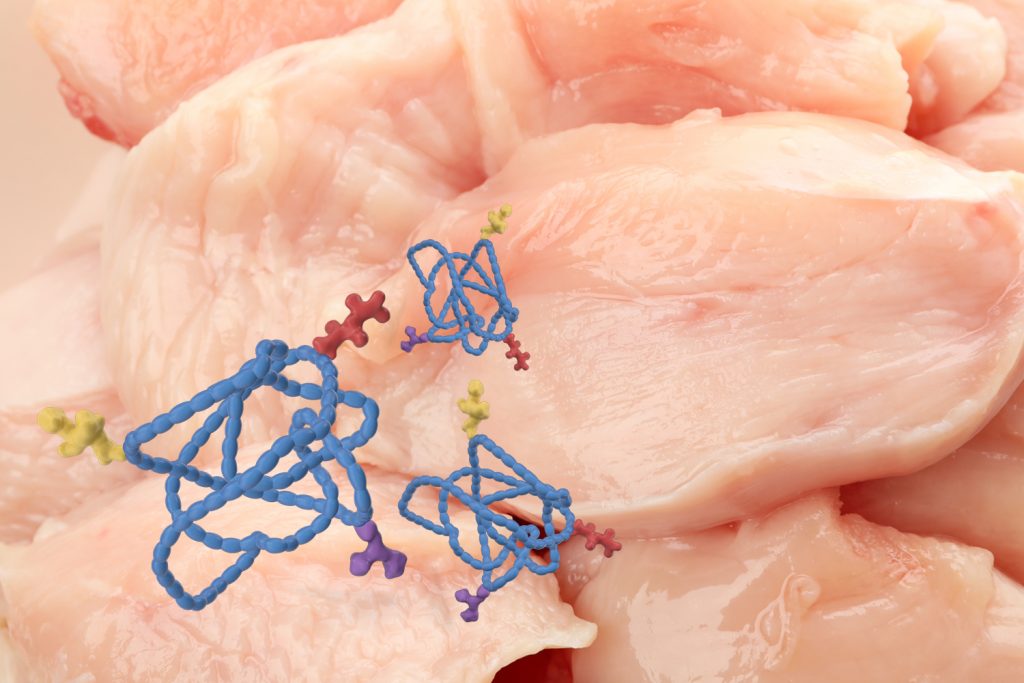IN OTHER LANGUAGES

Proteins are important targets of oxidative reactions, since they are abundant in living organisms and react quickly with oxidizing substances. However, unlike lipid oxidation, protein oxidation processes in meats, as well as their consequences, are poorly studied.
Oxidative processes produce reversible or irreversible changes in the structure of proteins, by modifying their covalent bonds. The physical and chemical properties of proteins are altered, including their primary structure (linear sequence of amino acids), three-dimensional shape, electrostatic charge, polarity, water solubility, and biological activity.
There are four main mechanisms of protein oxidation:
Protein oxidation impairs the nutritional, technological and sensory qualities of raw and processed meat.
Water holding capacity (WHC) is the ability to retain its own or added water throughout processing and storage, especially when external forces (force, pressure, centrifugation, or heating) are applied. A poor WHC results in a reduction of sellable meat weight and a worsening of the nutritional value, palatability and visual appeal.
The muscle contains 75% water, and the majority is held between the myofibrils (muscle fibers made of proteins) or between the muscular cells. Protein oxidation, particularly the formation of cross-linking bonds in the myofibril proteins, leads to a worsening of WHC. It can occur before or after slaughter.
Tenderness is considered the most important sensory trait. Meat becomes tender during post-mortem storage, when a group of enzymes called “calpain system” degrades the myofibrils.
Free radicals oxidate and inactivate calpain enzymes. Furthermore, the formation of cross-linking bonds in the myofibril proteins make them more resistant to degradation. Overall, protein oxidation results in tougher meat.
The oxidation of proteins impairs the nutritional quality.
The formation of carbonyl groups results in the loss of amino acids such as lysine, histidine and arginine, which are essential for humans. Phenylalanine and tryptophan are depleted by free radical attack.
On the other hand, oxidation may lead to a decrease in protein digestibility and bioavailability, and the consumption of oxidized meat may increase oxidation markers in human beings, which are linked to multiple diseases.
Essential oils are rich in constituents with high antioxidant activity and have been proven to reduce protein oxidation in meats. In multiple field trials, PhytoShield©, our liquid antioxidant rich in essential oils, has shown to improve the taste and the tenderness of broiler meat. Furthermore, in a recent trial (not published) the meats coming from animals treated with PhytoShield© showed better Water Holding Capacity.
PhytoShield© is an oral emulsion that contains essential oils, electrolytes and vitamins intended to promote growth, reduce oxidative stress, increase meat and egg quality, and keep the animals hydrated.

Certain health statements may not be applicable in your region.